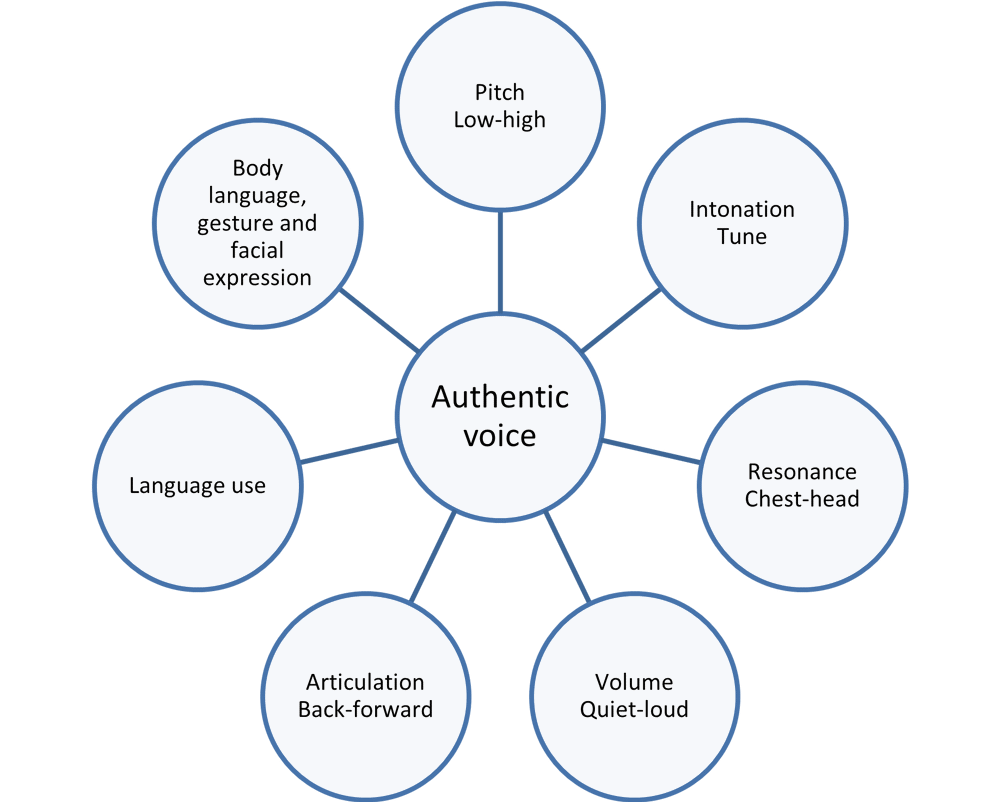By ‘authentic voice’ we mean a voice that you feel represents you. This may involve changing the sound of your voice or the feel of producing your voice. Your authentic voice is not set in stone, and may change over time as you learn to explore your voice, and that’s okay.
Please remember to be kind to yourself throughout this process.
Scroll down to find out more, and explore the activities which can help you to find your authentic voice.
Making a change
Getting to know your voice, understand what it can do and explore how you can make changes so you feel your voice better matches your identity takes significant commitment and time.
For these resources to work for you, the following things are essential:
- Time to practice daily
- A safe space to practice
- Opportunities to practice in conversation with another person
- Ability to listen to your own voice to make judgements about which aspects you like and which you want to change. We sometimes recommend recording your voice on your smartphone and listening back.
If you are looking to lighten and brighten your voice:
- Shaping your articulation - There are a few ways in which you can change the shape of the spaces in your mouth and throat which may help you to feel your voice/speech better represents you.
- Shaping the volume and pressure of your voice - Volume does not just mean how loud you are speaking but also how much you are pressing your vocal cords together. These are some more specific activities to help you explore these aspects of your voice to see what feels right for you.
- Shaping your pitch and resonance - It is not simply the pitch of your voice which determines how you sound. Where your resonance is will also play a significant part in how your voice is perceived by yourself and others. These activities will guide you through moving your pitch and resonance to a place which feels more authentic to you.
- Shaping your intonation - Changing your intonation relies on you making minor adjustments to your volume, pitch, rate of speech and even your facial expressions. Try these activities and consider how this sounds for you, and see whether it feels authentic to you.
If you are looking to deepen and darken your voice
- Shaping your articulation - There are a few ways in which you can change the shape of the spaces in your mouth and throat which may help you to feel your voice/speech better represents you.
- Shaping the volume and pressure of your voice - Volume does not just mean how loud you are speaking but also how much you are pressing your vocal cords together. These are some more specific activities to help you explore these aspects of your voice to see what feels right for you.
- Shaping your pitch and resonance - It is not simply the pitch of your voice which determines how you sound. Where your resonance is will also play a significant part in how your voice is perceived by yourself and others. These activities will guide you through moving your pitch and resonance to a place which feels more authentic to you.
- Shaping your intonation - Changing your intonation relies on you making minor adjustments to your volume, pitch, rate of speech and even your facial expressions. Try these activities and consider how this sounds for you, and see whether it feels authentic to you.
Progression activities for developing your authentic voice
You may have found that you have been able to alter one or several aspects of your voice on a single word or short phrase. If you like how this feels and sounds, you are probably wondering: how do I keep this up and start to use it in my everyday speech?
Progression to everyday speech will take time, but here are some progression activities to support you to develop your authentic voice.

This resource has been structured into two parts:
- Activities which brighten and lighten your voice (which some may associate with a more feminine voice)
- Activities which darken and deepen your voice (which some may associate with a more masculine voice)
You may wish to focus on “reducing” something about your voice, or you may wish to focus on “increasing” something about your voice.
In the boxes below, we have highlighted the ways in which you can use these activities to make effective and meaningful changes to your voice.
Remember! - This is just a guide - it is your voice and you should explore whichever activities you wish.
Keep an open mind and explore how different changes feel and sound to you – ask yourself, do I like this? Does this sound like me?
Ways to lighten and brighten your voice
- Smiling as you talk
- Speaking with your tongue further forward
- Reducing the amount of space in the mouth and throat
- Gentle, soft voice
- Bringing your resonance up into the throat and mouth
- Speaking in a higher pitch
- Increasing the rise and fall in your voice
Ways to deepen and darken your voice
- Relaxing the muscles in the face and jaw as you talk
- Speaking with a flatter tongue
- Increasing space in the mouth and throat
- Harder sounding voice
- Dropping your resonance into the throat and chest
- Speaking in a lower pitch
- Decreasing the rise and fall in your voice